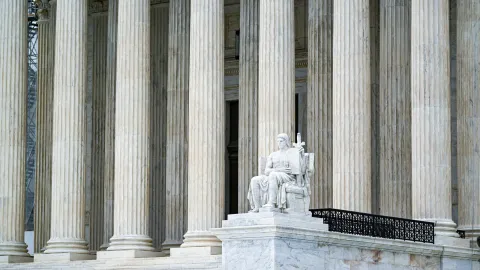
Curious about the many news on the matter, but would you like a clear and brief description? Read Prof. Cary Coglianese's analysis posted on LinkedIn:
Today’s overturning of the Supreme Court’s 1984 decision in Chevron v. NRDC, one of the most cited administrative law precedents in the Court’s history, is dramatic. Yet it's not altogether surprising either, as it's of a piece with the current majority’s skepticism of the exercise of authority by administrative agencies.
Today’s decision authorizes a more muscular posture by the judiciary when reviewing decisions of administrative agencies. Its results will be felt within agencies across the federal government. Some agencies will likely give even greater pause before responding to new, pressing problems under older statutes that do not unambiguously authorize needed governmental response. This could mean, for example, that agency officials will feel hampered in their ability to respond to matters such as cybersecurity risks or the risks of artificial intelligence that have not been specifically spelled out in agencies’ authorizing statutes that were written in an earlier time.
Another consequence of today’s decision is a further shift in power from Congress and the executive branch to the judiciary. This may paradoxically create both new flux and new rigidity in public policy. The flux will come when different lower courts interpret the same agency statutes differently. Some empirical research has suggested that Chevron dampened the ideological variance across judicial decisions concerning agencies’ statutory authority. Unless or until the Supreme Court resolves lower court differences of opinion, agencies will face conflicts and even some chaos in what their authorizing statutes mean.
On the other hand, going forward, when courts resolve questions of agency statutory meaning, their decisions will introduce new rigidities. Chevron had afforded agencies the opportunity to change their interpretations of ambiguous statutes in light of new evidence and new problems—as long as those new interpretations were reasonable. Chevron was grounded on the premise that Congress had both empowered and entrusted the agency to act upon its expert judgment in light of new circumstances. But no more. Going forward, what a court says a statute means will be fixed by principles of strong stare decisis or precedent. Agencies will thus be given less room to adapt as needed in the face of changing technologies or social circumstances.
There is one thin silver lining in today’s decision from the standpoint of preserving Chevron’s virtues: the Court did not ground its overturning of Chevron on the constitution but on statutory law. It held that Chevron was inconsistent with the Administrative Procedure Act. This means that, in principle, a future Congress could overturn today’s overturning and reinstate Chevron by requiring courts to adhere to it. Clearly the political stars would need to align to see this happen. But in the future, should both houses of Congress have sufficient majorities willing to act, it is possible that Chevron will rise from the ashes.
If you want to know more, see here a conversation among leading experts in U.S. administrative law.
Submitted on Sat, 07/13/2024 - 18:46

